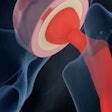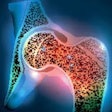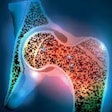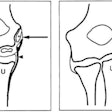WASHINGTON, DC - Presurgical MRI may identify enthesopathy in patients with rotator cuff tears, according to a presentation Thursday at the 2005 American Academy of Orthopaedic Surgeons (AAOS) meeting. Enthesopathy can be an important secondary marker for determining the presence and severity of rotator cuff disorders, helping clinicians choose candidates for surgery.
"We were looking at T1 and T2 scores as a potential secondary marker for enthesopathy, which is irregularity of the surface of the greater tuberosity that can be found on MRI. We found that a greater severity of enthesopathy was predictive of rotator cuff tear on both T1-weighted and T2-weighted images," said Dr. Adam Ross Coen from the New York University School of Medicine in New York City.
For this study two musculoskeletal radiologists retrospectively reviewed MR studies performed on 79 patients who underwent arthroscopic procedures for rotator cuff disorders. Three groups of patients were identified.
Group one consisted of 26 patients with shoulder instability with no evidence of impingement or rotator cuff tear at surgery. Group two included 21 patients with clinical impingement without rotator cuff tear at surgery. The third group consisted of 31 patients with rotator cuff tear at surgery, Coen reported.
The two radiologists examined coronal oblique T1-weighted and T2-weighted fat-suppressed images, grading them on a scale of 1 (indicating no enthesopathy) to 5 (worst enthesopathy). Investigators then utilized a logistic regression model to evaluate the significance of T1 and T2 scores in diagnosing rotator cuff tears and impingement.
In the statistical analysis, Coen and his team found that T1 and T2 enthesopathy scores served as independent significant predictors of cuff tears. In addition, scores of 4 or 5 were highly specific for tears, with specificities of 93% for both T1 and T2 images. The T1 and T2 scores were also independent significant predictors of impingement with and without age and gender adjustment, the investigators noted.
While the results were positive, Coen noted that there were some limitations to this particular study, most notably the subjective grade assigned by each reader to the severity of enthesopathy. More objective studies are necessary, he said.
Overall, this study does hold promise that this marker will help identify "surgically significant shoulders," he added. The MR test may be of particular value in older patients with asymptomatic, age-related tears who may not benefit from surgical intervention.
"If you find greater severity of this marker in shoulder MRI, you may have a patient who requires surgery," Coen said. "Both age and gender are also significant predictors of rotator cuff tears, but when you add T1 and T2 to the mix it adds to the predictive value."
By Jerry Ingram
AuntMinnie.com contributing writer
February 24, 2005
Related Reading
Acromion evaluation proves tricky for x-rays and MRI, February 21, 2005
Standard and extremity MR bear brunt of shoulder imaging, November 17, 2004
Copyright © 2005 AuntMinnie.com
















